The HITOP aquarium heater looks like an excellent aquarium heater on paper, but does it walk the walk when it comes to every day use? And how does it compare to similar aquarium heaters?
To find out, I purchased the 200W HITOP aquarium heater and ran it through some tests to understand how accurate, safe, and reliable it is compared to other heaters.
In this guide, you’ll find a first-hand account and get real world data on how this aquarium heater performs.
HITOP Aquarium Heater Review Overview
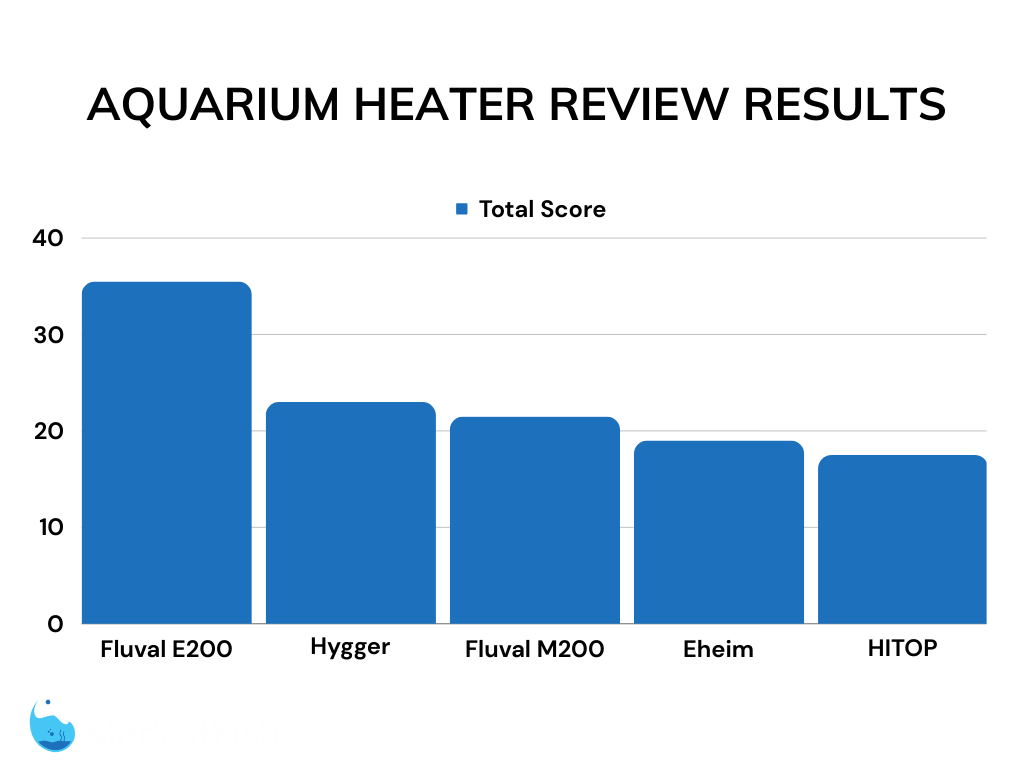
This HITOP heater performed poorly in my opinion, especially compared to other heaters that I’ve recently tested, like the Fluval E200.
This heater has some cool features, like a built-in heater guard, but I found it lacking when it came to performance, installation and consistency.
I think this heater would perform better in something like a 30 or 40 gallon, but it was too underpowered for my 55 gallon.
This heater may be more economical than a Fluval E200, but in the long run, I think it’s better to go with the Fluval.
| Preview | Product | |
|---|---|---|

|
HITOP PTC Adjustable Aquarium Heater, Sturdy Fish Tank Heater with Protective Cover,... | Buy on Amazon |

|
Fluval E Series Advanced Electronic Heater for Aquariums | Buy on Amazon |
Last update on 2024-04-26 / Commissions Earned / Images from Amazon Product Advertising API
How I Tested The HITOP Aquarium Heater
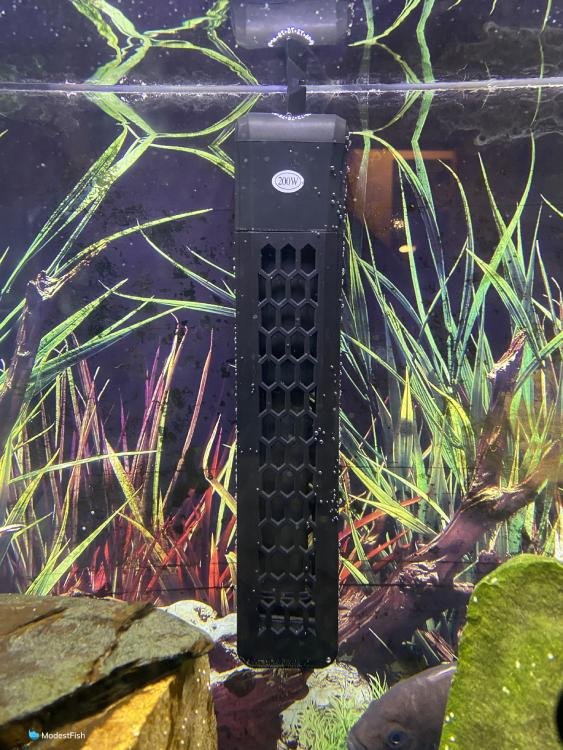
I did a head-to-head challenge with five different heaters to see how they compared to each other:
- Fluval E200
- Hygger 200 Digital Quartz Heater
- Fluval M200
- Eheim Jager Thermostat Aquarium Heater
- HITOP Adjustable PTC Aquarium Heater
All are 200 watt heaters to help make sure I was comparing apples to apples.
Each heater was placed in my 55 gallon cichlid tank for a week so that I could evaluate its performance.
I took notes, and tons of pictures, so I could accumulate some real data and share it with you guys. I was especially looking at how hard it was to install the heater, how much hassle it was to get it calibrated so that it held the water at the correct temp and how consistent the temperature was.
I made sure to put all five heaters in the same spot at the back of my tank to ensure a fair comparison.
There’s lots of flow in this spot. It’s very close to the outflow of my hang-on-the-back filter and there are also several airstones and a sponge filter attached to a powerhead providing even more current.
I placed five thermometers across the front of the tank so that I could easily monitor the temperature in the tank throughout the day.
I also did a head-to-head challenge comparing aquarium thermometers. You can see that experiment here.
The testing tank is located in a climate controlled room that has an average temperature of around 70°F (21°C).
My goal was for the water temperature in the tank to stay at 75°F (24°C).
Features I’m Looking for in a Heater
Easy to read temperature settings – I prefer a heater that has easy to read settings. Some heaters don’t have clearly marked temperature settings and there’s a lot of guesswork and headache when you’re trying to set or change the temperature. It’s so much easier if there are clear markings.
Durability – the outside of a heater may be made from glass, ceramic, titanium or plastic. Glass and ceramic heaters are more prone to cracks and shatters. Tougher materials, like titanium or plastic, make a heater more durable
Indicator light – a heater can have no indicator lights (boo!), an indicator light for active heating mode, or two indicator lights, one for active heating and one for standby mode. I prefer heaters with two lights because then you can easily see that the heater has power, even if it’s in standby mode.
Overheat/dry sensor – an overheat sensor will trigger an emergency shutdown if the water reaches a certain temperature. A dry sensor detects when a heater is running while out of the water and shuts the heater down. That same sensor will detect when the heater is put back in the water and will then turn it back on. These are handy safety features that can help prevent shatters and cracks, melted heaters, serious burns and even house fires.
Heater guard – a heater guard is like a plastic cage that wraps around the heater to prevent fish from touching the heater while it’s in active heat mode. You would think that being underwater would prevent burns, but…nope. Aquarium heaters can burn fish that swim too close, even to the point that the fish dies. Humans can also get burned if they touch an aquarium heater that’s in active heat mode. My dad got a nasty burn on his hand once. Ouch!
What’s in the Box?
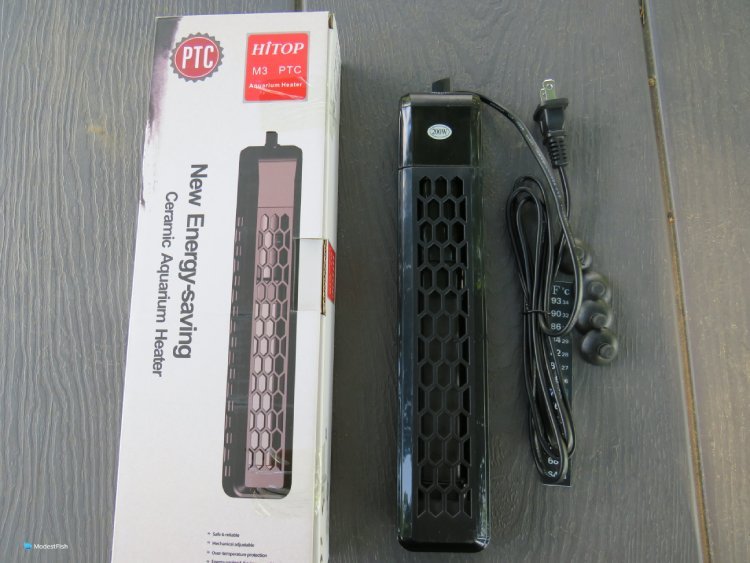
You get the following things when you buy this HITOP heater:
- Heater with built-in heater guard
- Loose suction cups
- Instruction pamphlet
Yep, that’s it, pretty darn simple.
Here’s a breakdown as far as features for this heater:
Easy to read temperature settings – this heater has a really easy to read temperature dial on the very top.
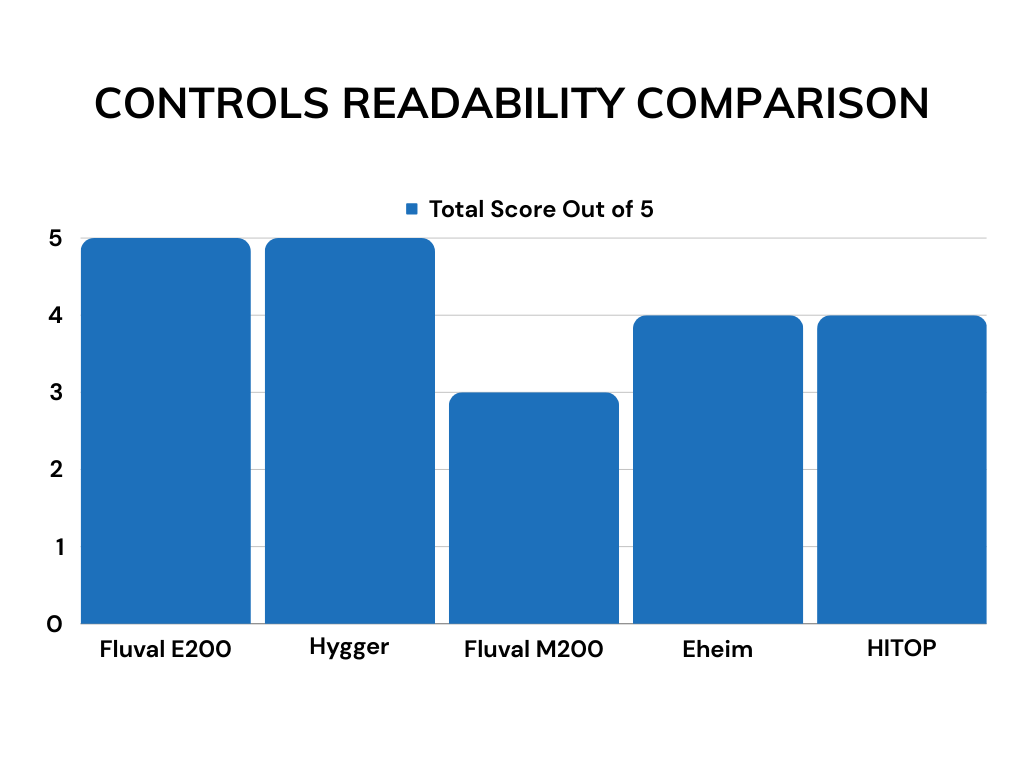
Durability – the heating element is made of ceramic, so it is vulnerable to cracks and shatters. But, the built in heater guard should help prevent light bumps and will keep things like plants and decor from touching the heating element.
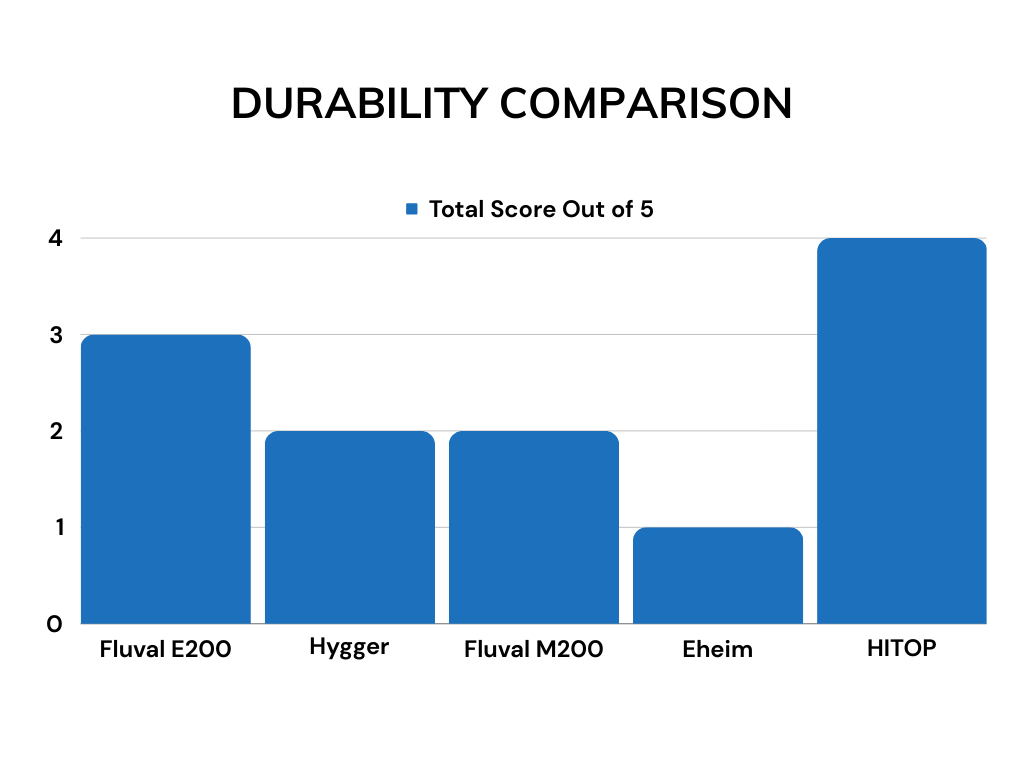
Indicator light – there is a red indicator light that lets you know when it’s in active heating mode.
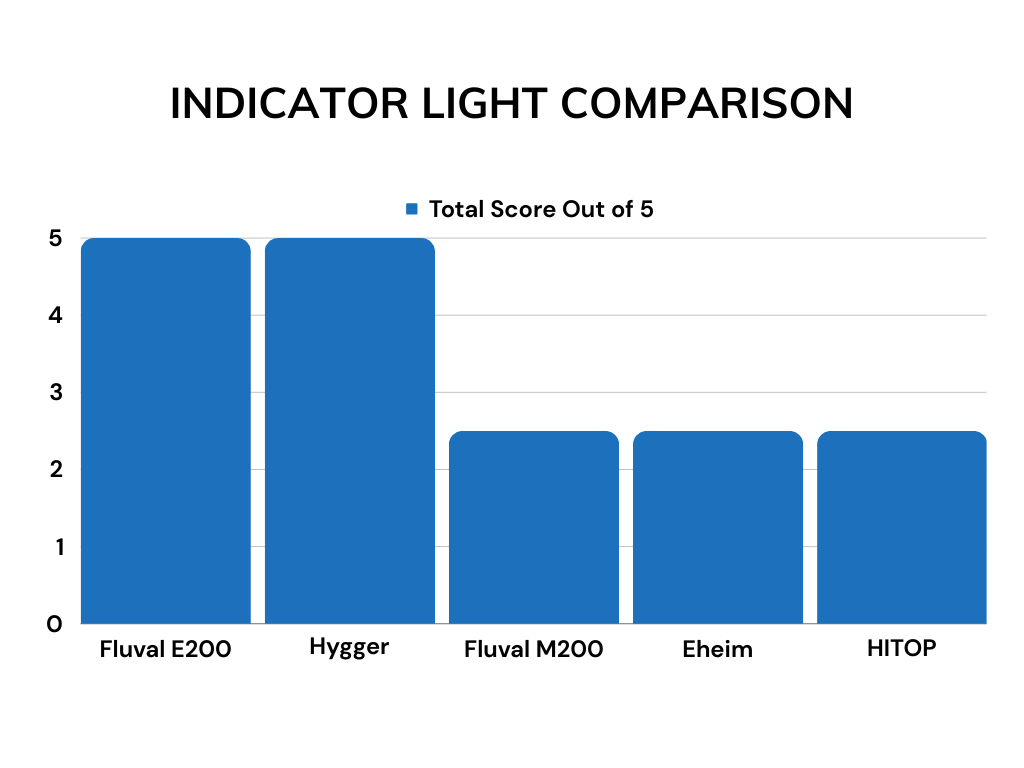
Overheat/dry sensor – unfortunately, no overheat or dry sensor on this model.
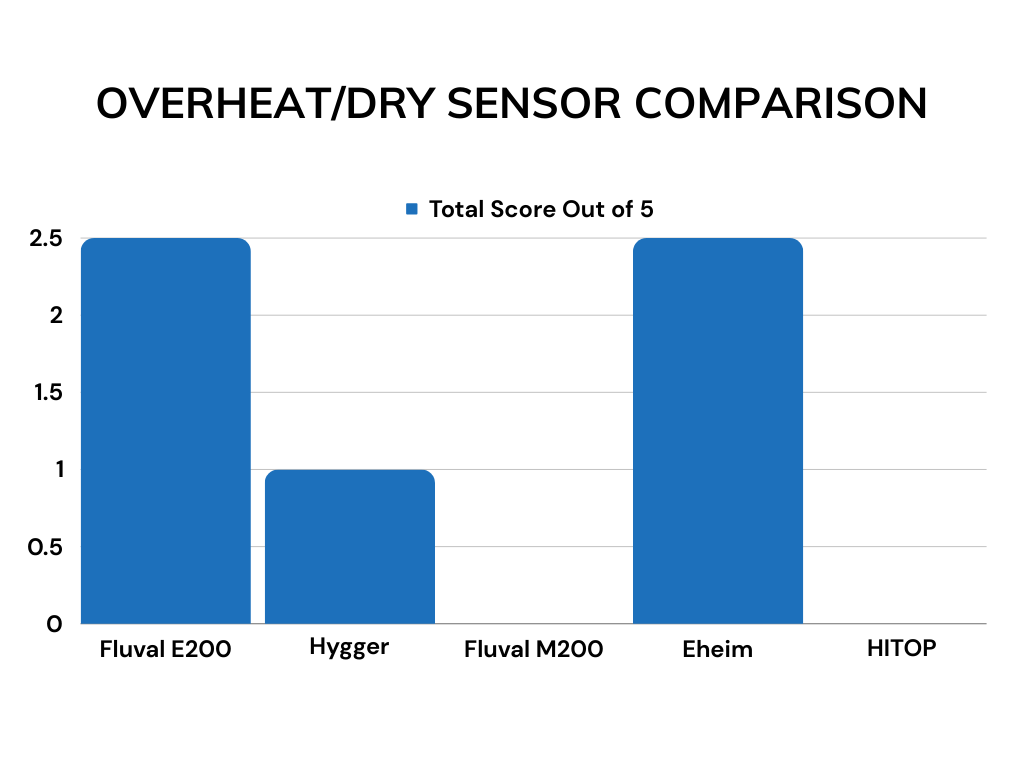
Heater guard – built-in heater guard. But, the holes are large enough that really small fish, like guppies or chili rasboras, could possibly fit though the holes and come in direct contact with the heating element.
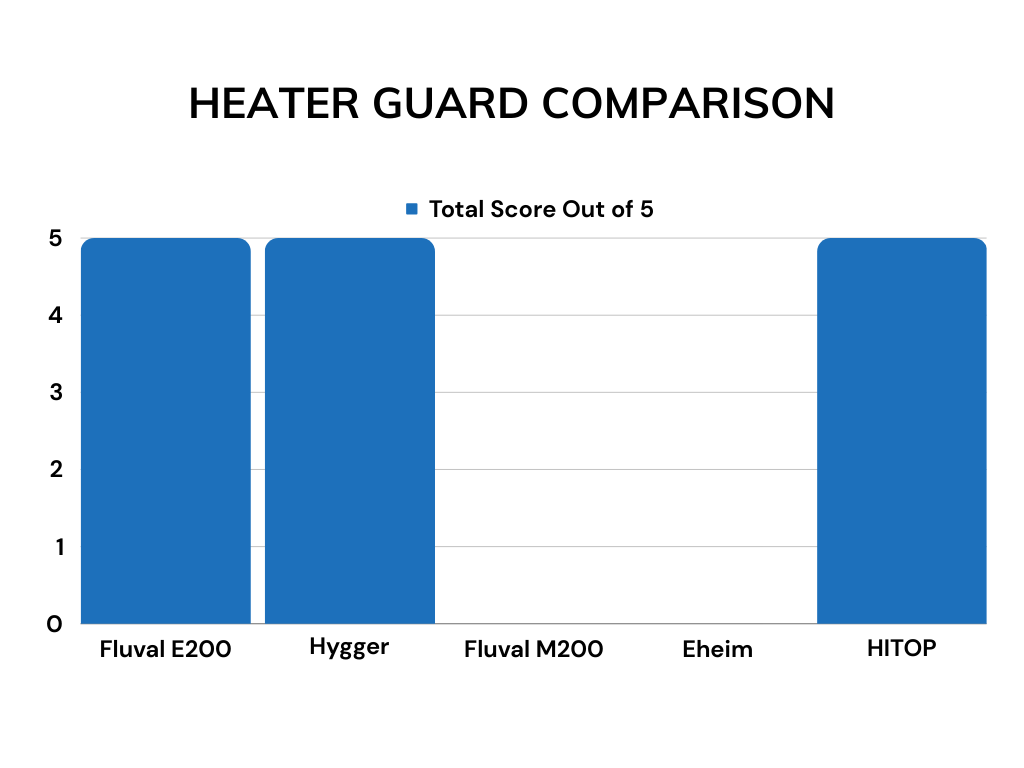
Review: Overall Pros and Cons
Pros:
- Built in heater guard that can help protect heating element from bumps and keep larger fish from getting burned
- Easy to read temperature controls
- Setting/adjusting temperature is simple
Cons:
- Underpowered compared to other 200 watt heaters
- Struggled to maintain consistent temperature in a 55 gallon
- Holes in heater guard are large enough for small fish to pass through
I had high hopes for this heater when I first set it up, but it was a bit of let down in certain regards.
Here’s what I like about this heater:
I love that this heater has a built-in heater guard. I didn’t used to worry about heater guards, it just was never really an issue.
But then, I lost a school of dwarf rainbow fish because they were swimming between the aquarium glass and the back of the heater. All it took was briefly touching the heater while the heating element was on to burn them bad enough that five died. I was so upset.
So now, I’m all about heater guards and give bonus points to any heater that comes with one.
But, one concern, the holes in the heater guard are quite large. So large in fact, that I worry that small fish might be able to fit through the guard.
I like that this is a space saving design. Some of the other heaters I tested were much larger, even without a heater guard.
I also really like the overall design of the heater aesthetically. I think it’s really nice looking and it wasn’t an eyesore in the tank. I know this isn’t the most important thing about a heater, but it’s nice if the thing isn’t just plain awful to look at in the tank.
I do think this heater is underpowered, and because of that, calibrating it was a pain. I initially set the dial at 75°F, but I kept having to bump the temperature dial up several times to get it to hold the water at the correct temp.
The dial had to be set all the way up to 79°F (21°C) before it had enough juice to keep the tank somewhere in the neighborhood of 75°F.
This HITOP heater also did not do a good job of maintaining a consistent temp. The temperature would drop by as much as 3°F throughout the day.
Of the five heaters that I reviewed for this series of articles, this was the only one with swings this big. In fact, three of the five had no recordable swings at all.
And installing this heater was a huge pain. You get two loose suction cups in the box along with the heater.
The suction cups have nubs on the back of them that you’re supposed to push through holes on the back of the heater.
This is pretty standard, lots of heaters and other aquarium equipment have you do this as a part of installation.
But this was badly designed on this heater. It was ridiculously difficult to attach the suction cups. I’ve done this for dozens of pieces of equipment over the years and this was the hardest one I’ve ever messed with.
It was so hard to get them attached that I had to give up and ask my husband for help. He’s a master DIY kind of guy and even he had a really hard time.
He finally got them pushed through by using a small screwdriver to push the ring of the nub into the bracket a little bit at a time. It was not fun and he was most displeased.
So definitely, if you have any kind of trouble with your hands, don’t buy this heater.
How The HITOP Compare to Other Heaters?

This heater got the lowest marks when compared to the rest. It was the hardest to install, the hardest to calibrate and was the most inconsistent.
The heater guard is nice, but the one on the Fluval E200 is even better. The holes on the Fluval are much smaller, so there’s much less risk of small fish swimming through the gaps.
It has easy to read settings, but so does every other heater I tested. The dial isn’t a new or mind blowing feature, by any stretch of the imagination.
And both the Fluval heaters I reviewed, as well as the Eheim heater I tested, were all easier to calibrate and held the tank at a much more consistent temperature.
The Fluval E200 ended up being my top pick from this group. It blew the competition out of the water as far as I’m concerned.
| Preview | Product | |
|---|---|---|

|
HITOP PTC Adjustable Aquarium Heater, Sturdy Fish Tank Heater with Protective Cover,... | Buy on Amazon |

|
Fluval E Series Advanced Electronic Heater for Aquariums | Buy on Amazon |
Last update on 2024-04-26 / Commissions Earned / Images from Amazon Product Advertising API
Read the full round up review for the best aquarium heaters here
Final Thoughts On The HITOP
I really wanted to like this heater. It has a cool looking design and I was hoping that it would be a true competitor for the Fluval E200.
Alas, such was not the case. This heater has some real problems. It’s lacking basic qualities, like holding a consistent temp, as well as optional safety features like overheat and dry sensors.
Yes, the Fluval E200 is a bit more expensive, but I’d rather spend a few more bucks on a heater now than lose livestock because I went with a discount heater.
This HITOP heater might work for a 30 or 40 gallon, but it did not have the power to maintain a consistent temp in my 55 gallon, especially compared to both of the Fluval heaters I tested. They were leaps and bounds better.
So, yeah, maybe consider a different brand.
I hope you find this article helpful.
I wish you and your fish the very best!
| Preview | Product | |
|---|---|---|

|
HITOP PTC Adjustable Aquarium Heater, Sturdy Fish Tank Heater with Protective Cover,... | Buy on Amazon |

|
Fluval E Series Advanced Electronic Heater for Aquariums | Buy on Amazon |
Last update on 2024-04-26 / Commissions Earned / Images from Amazon Product Advertising API
